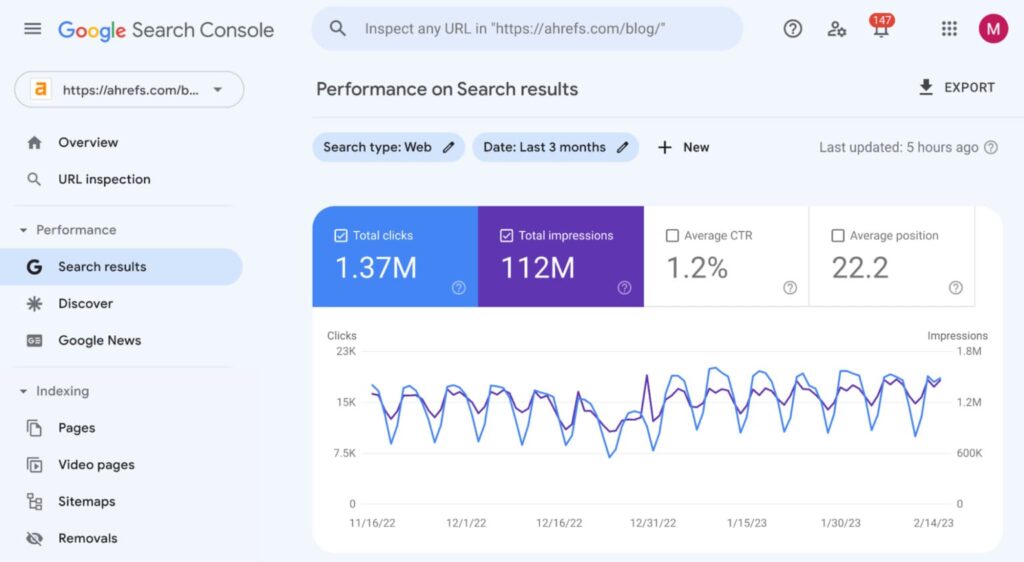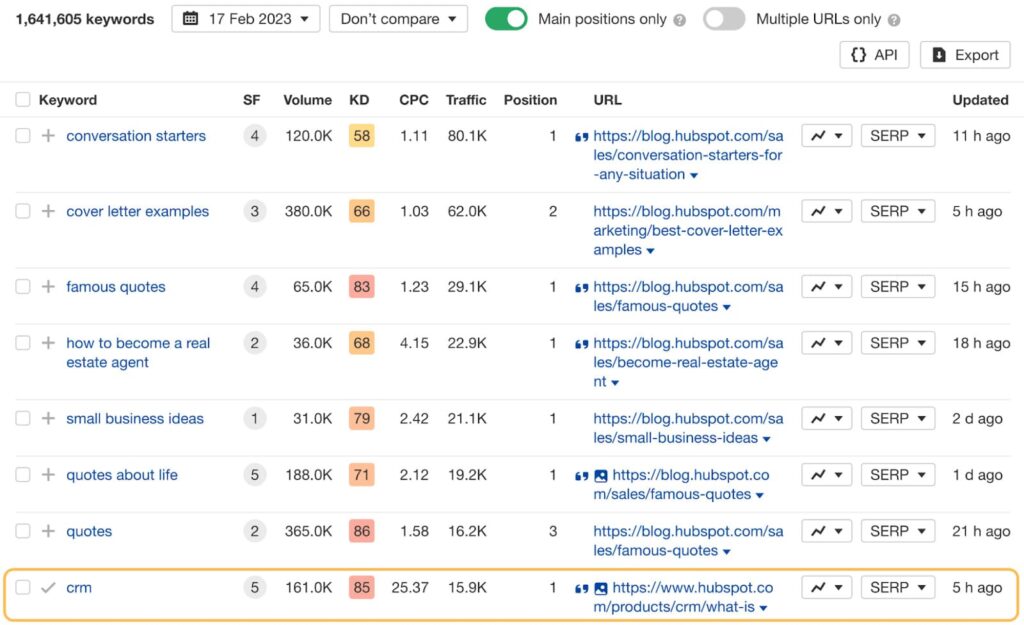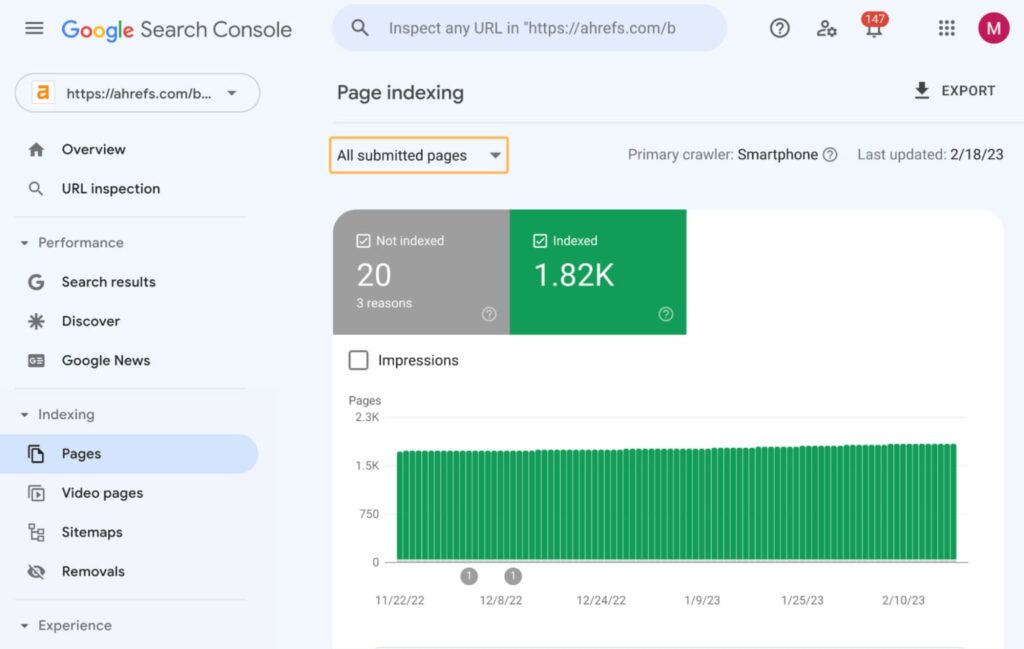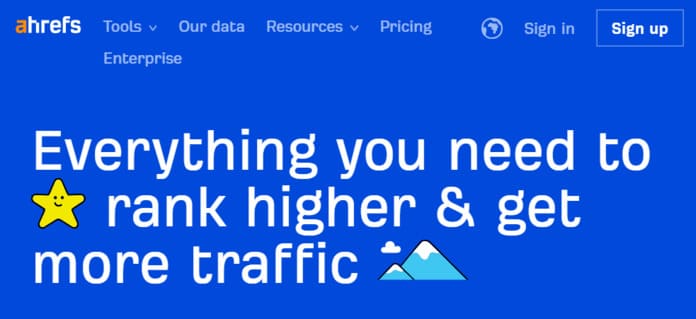Measuring & Tracking SEO Performance
Promoting a business website in search engines can lead to losses even when organic traffic is growing and the outlook seems favorable. Moreover, this tool is not suitable for every brand or company. Given this, it is essential to ask: “How to reflect the true SEO performance of the entire SEO campaign?” It is crucial to accurately assess the results of search optimization and calculate its economic feasibility.

What is SEO monitoring?
Comprehensive SEO monitoring of a business website involves systematic monitoring of the development indicators of a web resource for compliance with the requirements of Google and other search engines.Simply put, monitoring provides the ability to track and evaluate everything happening using Google Analytics, followed by preparing recommendations to eliminate shortcomings and issues that hinder promotion. It is important not to confuse an audit with a technical check. With SEO monitoring, you can not only track but also analyze the performance metrics of a business website to ensure it maintains visibility and aligns with business objectives. This includes the necessity to track key indicators, such as keyword ranking, backlink quality, organic traffic, and click-through rate.
Top SEO Metrics You Need To Track
Calculating SEO performance is a feasible task if a brand or company pays due attention to Google Analytics and is not dealing with a brand-new landing page (and when the average adaptation indicator is known, for example, when ranking and indexing indicators and others are known). To evaluate performance, it is essential to rely on KPIs (key indicators) that contribute to the qualitative measurement of promotion results. These include the quantity and quality of traffic, cost per visitor, project visibility in search engines, return on investment, achieving goals, and more.
Organic Traffic
The number of visitors who reach a business website through search engines without ads is called organic traffic. A high level of natural traffic indicates good content optimization, proper keyword selection, and strong website authority. Google Analytics is used to analyze performance dynamics and adjust strategy.

Keyword Rankings
Keyword rankings show the positions at which a business website appears in search findings for target queries. Regular monitoring helps assess SEO performance, detect algorithm changes, and adjust content strategy. Tools such as Google Search Console or others are used when working on different business projects.

SERP Visibility
Among all SEO metrics, an important one is visibility in organic search, which reflects how often a brand’s or company’s website appears in search listings for various keywords. High visibility increases the likelihood of attracting traffic and strengthens online brand presence. Google Search Console is used for monitoring positions and making strategic improvements.
Impressions
To measure SEO performance, impressions should be considered. This is the number of times a business website page appears in search results. An increase in impressions indicates proper keyword selection and their high relevance to search engines. However, it’s essential to analyze not only the quantity but also the quality of traffic, identifying which web pages receive the most impressions and why.
Click-Through Rate
CTR is the percentage of internet users who clicked on a business website after it appeared in search findings. A high click-through rate directly indicates the attractiveness of titles, meta descriptions, and well-chosen keyword ranking phrases. To improve CTR, various title variations are tested, engaging descriptions are added, and only relevant words, short phrases, and textual formulations are used.
Conversions
This refers to the number of internet users who completed a target action on a business website, such as purchasing goods or services, subscribing, filling out a form, etc. To optimize this indicator, SEO efforts should be undertaken, which will help increase traffic profitability. It is also essential to analyze which web pages generate the most conversions and improve the user experience (UX) to enhance this metric.

Bounce Rate
This indicator represents the percentage of internet users who left a business website after viewing only one page. A high bounce rate may indicate irrelevant content, slow website loading, or poor navigation on the business platform. Proper page enhancement, improved design, and eliminating speed-related issues can significantly reduce the bounce rate.
Website Authority
This metric reflects search engines’ trust in a business website. It depends on the number and quality of backlinks, content uniqueness, and technical optimization processes. By using various SEO tools to evaluate website authority and improve the link profile, higher overall SEO performance can be achieved.
Backlinks
Backlinks are links from other web sources leading to a specific business website. High-quality, relevant, and thematic backlinks increase search engine trust and improve positions in organic search. Tracking a natural link profile and avoiding spam can help achieve high rankings in search results. Google Search Console is commonly used for backlink analysis.
Technical Health
This metric impacts website loading speed, security, and usability. Key factors considered when optimizing a business website include full mobile responsiveness, the absence of errors such as “404” and others, proper redirect functionality, and structured data. Regular audits with tools like Google PageSpeed Insights help identify and fix technical issues.

Engagement Time
The average duration of a user’s active interaction with a business website is a key indicator. A longer time spent on a page signals high-quality content and easy navigation. To increase engagement time, businesses create valuable and informative content, improve the user experience, and analyze visitor behavior using tools like Google Analytics.
Track and Monitor SEO Progress
It is essential to ask whether the SEO strategy and content attract more organic traffic from search engine results pages (SERP) to the business website, whether any changes are needed in the SEO campaign, and what tools are required to route overall success. To effectively monitor and track SEO progress, it is crucial to use only those tools that provide the most accurate SEO metrics. This approach helps optimize the website’s performance without overspending.
Setting Up SEO Tracking Systems
This is the first step toward successful promotion, involving the active use of Google Analytics and Google Search Console, as well as other specialized SEO platforms such as Ahrefs or SEMrush. Setting up tracking conversion, behavioral metrics, and technical issue detection on a business website provides comprehensive data on the performance of the brand or company’s web resource, allowing for a quick response to changes.
Monitoring Keyword Rankings and Search Visibility
Regularly monitoring keyword position helps better assess SEO performance. By using tools to track the business website’s visibility, analyze competitors, and identify trends in organic search, it is possible to achieve high visibility for the brand or company’s web resource. However, in addition to these tools, it is also necessary to analyze CTR, detect algorithm updates affecting search results, and route the impact of content on rankings.
Regular SEO Audits
An SEO audit should be conducted systematically, as it helps identify technical shortcomings, errors, and issues related to website indexing and content quality. Checking page load speed, mobile-friendliness, internal linking, and the quality of backlinks should be a priority in the optimization process. By analyzing all SEO efforts, it is possible to adjust the strategy in time and improve the website’s position in search results.

Creating SEO Reports
Well-structured SEO reports help analyze progress and demonstrate results. It is important to include key SEO metrics such as organic traffic, conversion, keyword ranking, bounce rate, CTR, backlink profile quality, and more. Regular data analysis allows for the identification of strengths and weaknesses in the strategy, making real-time adjustments to business projects to achieve SEO success.
Tools to Help Measure SEO Performance
Each tool that helps track SEO rankings is, simply put, an application or web platform that stalks the position of pages in organic search findings for specific keywords. It involves gathering data from search engine results and analyzing the effectiveness of key phrases and words to provide valuable insights.
Google Search Console
GSC is a free tool from Google that helps with tracking a business website’s visibility in search results. It provides data on impressions, clicks, average position, and click-through rate (CTR). GSC also identifies technical errors, and indexing issues, and offers recommendations for improvement.
Google Analytics
GA analyzes user behavior on a website. It allows you to track how many visitors come to the site, which pages they view, and how much time they spend. Google Analytics enables goal setting, tracking conversions, and analyzing traffic sources. For instance, using segmentation, you can determine which channels bring the most engaged users.
SEO Tools for In-Depth Analysis
To analyze various important SEO metrics, understand users and their search intent, and gain deeper insights into SEO performance, additional web tools are needed. These include well-established and highly relevant services that rival Google Analytics or GSC in functionality, offering a wide range of features and capabilities.
Ahrefs
Ahrefs is one of the most powerful tools for analyzing backlinks, researching keywords, and assessing competition. It allows you to monitor and log backlinks, analyze competitor traffic, and discover new promotion opportunities.
Example
Company: Matthew Barby.
Industry: SaaS.
Usage: Matthew Barby, a digital marketing expert, used Ahrefs to analyze competitor backlink profiles and identify high-performing content strategies.

This approach significantly increased traffic to his projects.
Semrush
Semrush is a comprehensive tool for SEO and content marketing. It enables keyword analysis, website position tracking, audits, and identification of weaknesses in competitors’ strategies.
Example
Company: Copy Tactics.
Industry: Content Marketing.
Usage: Copy Tactics used the Keyword Magic Tool from Semrush to discover relevant keywords and topics, improving their content marketing strategy and search engine rankings.

Moz
Moz offers a wide range of tools for domain analysis, backlink monitoring, and page auditing. Its famous Domain Authority (DA) metric helps assess a website’s credibility.
Example
Company: Copy Tactics.
Industry: Content Marketing.
Usage: Copy Tactics used Moz’s Open Site Explorer to analyze competitor backlink profiles, gain insights into their link-building strategies, and enhance domain authority.
Screaming Frog
Screaming Frog is an SEO technical audit tool that helps analyze pages, and detect broken links, indexing errors, and duplicate content.
Example
Company: Copy Tactics.
Industry: Content Marketing.
Usage: Copy Tactics used Screaming Frog to conduct a comprehensive website audit, and identify SEO technical issues such as broken links and duplicate content, leading to improved website performance.
Interpreting SEO Metrics and Making Data-Driven Decisions
To understand which search engine rankings were achieved through various enhancement efforts, it is essential to assess overall SEO performance and identify areas for improvement. Metrics such as organic traffic, positions in organic search, and conversion rate help make informed decisions. By analyzing data, businesses can adjust content, enhance user experience, and improve website visibility.
Analyzing Search Intent and User Behavior
Understanding search user intent and user behavior is crucial for SEO performance. Analyzing how users interact with the content on a business website, the queries they use, and their navigation patterns help optimize user engagement. Aligning content with user expectations improves rankings, increases engagement, and attracts targeted traffic from organic search.

Evaluating SEO Performance Based on Business Goals
To measure SEO performance and truly assess the success of SEO results, it is important to align key metrics such as natural traffic, conversion rate, and key phrase ranking with business objectives. Evaluating how well efforts SEO contributes to attracting potential customers based on search intent, boosting sales, and increasing brand awareness is crucial. Continuous monitoring and adjustments based on data (CTR, bounce rate, and more) help maximize ROI and achieve long-term goals.
Common Challenges
Implementing SEO strategies can be complex due to multiple factors affecting website visibility and performance. In any case, if there are problems, it is better to solve them as soon as possible. Understanding these common obstacles helps brands and businesses efficiently manage SEO implementation challenges.
Delayed SEO Results: When Will You See SEO Results?
SEO is primarily a long-term strategy, and results often take time to appear. Typically, it takes 3 to 6 months to see significant improvements in Google rankings and online traffic. Factors such as website authority, competition, and content quality can influence the speed of achieving results.
Fluctuating Keyword Rankings and Search Algorithm Updates
Keyword and phrase rankings fluctuate due to continuous updates in search engine algorithms. These updates can impact how search engines assess and rank websites, affecting keyword positions. Regular monitoring and adaptation to algorithm changes are essential for maintaining SEO success.
Tracking Local vs. Global SEO Performance
Tracking local and global SEO effectiveness requires different approaches. Local SEO focuses on rankings within a specific region, whereas global SEO considers a broader reach. Tools like GA and GSC help track both, but they must be analyzed differently to gain accurate insights for each strategy.
FAQ
Why Is Measuring and Tracking SEO Results Important?
Tracking SEO helps understand which strategies work and which do not. It allows for significant content improvement, increased website positions in search engines, and higher conversion rates. Regular analysis of metrics such as natural traffic and positions of key phrases helps adjust the strategy to achieve the best results and maximize the return on financial investments allocated for business development and promotion.
How Long Does It Take to See SEO Results?
Typically, the first search engine rankings become noticeable within 3–6 months, but the timeframe depends on competition, the age of the business website, and the quality of the SEO processes. In highly competitive niches, this may take longer. Technical SEO, content, and link building accelerate the process, but for stable growth, continuous updates and strategy analysis are crucial. Therefore, the first profits can be expected no earlier than one year or within 12–18 months, depending on the quality of the strategy and the SEO improvements implemented as a whole.
What are SEO metrics?
Professional SEO metrics are indicators used to assess the effectiveness of the entire promotion process. The main ones include natural traffic (the number of visitors from search), positions of key phrases, expressions, words, and quotes, CTR, bounce rate, the number of backlinks, and conversions. Analyzing this data helps refine the strategy and improve results.
How do you check SEO ranking?
Checking the positions of a business website in search engines is possible using GSC, Ahrefs, SEMrush, and other tools. They allow for the analysis and tracking of key phrases and words, competitor research, and identifying weaknesses in the strategy. It is also possible to manually search for the website on Google, but results may vary due to search personalization, which is an important factor to consider.





